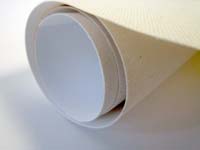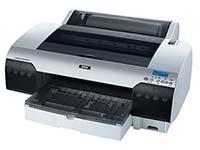| Glossary Of Giclee Terms
[16] |
I
ICC International Colour Consortium |
 |
| ICC Profile An ICC profile, short for International Color Consortium profile, is a standardized data file that describes the color characteristics of a device, such as a monitor, printer, or digital camera. ICC profiles define how colors are represented and reproduced by a device, including color gamut, color temperature, and color response. By using ICC profiles, color management systems can ensure consistent and accurate color reproduction across different devices and software applications. In Giclée printing, ICC profiles are used to calibrate printers and ensure that prints accurately match the colors of the original digital image. |
Illustrator An Adobe program used to edit digital vector images. It can create original vector images (images created using geometric shapes - lines, curves, polygons) or edit existing vectors.
Illustrator is commonly used for graphic design, animation and typography. |
| Image Alignment Image alignment is the process of adjusting the position and orientation of multiple images to achieve precise registration and alignment between them. Image alignment is essential in various imaging workflows, including panoramic photography, image stitching, and compositing, where multiple images need to be seamlessly combined or overlaid. Alignment techniques may involve matching key features or control points in the images, applying geometric transformations such as translation, rotation, and scaling, or using specialized software algorithms to automatically align images based on visual similarities. |
| Image Capture Image capture refers to the process of capturing or acquiring digital images using a digital camera, scanner, or other imaging device. During image capture, light from the scene is converted into digital data by sensors in the imaging device, creating a digital representation of the subject or scene. Image capture parameters such as exposure, aperture, shutter speed, ISO sensitivity, and white balance settings influence the quality, brightness, color accuracy, and detail of the captured images. In Giclée printing, high-quality image capture is essential for producing digital files with sufficient resolution, color fidelity, and detail for printing. |
| Image Carrier An image carrier is a substrate or material on which an image is printed or transferred. In Giclée printing, common image carriers include paper, canvas, fabric, metal, and specialty media. The choice of image carrier depends on factors such as the desired print size, surface texture, finish, and intended use of the final print. Different image carriers can affect the appearance, texture, durability, and archival properties of the printed image. Giclée printers are capable of printing on a wide range of image carriers, allowing artists and printmakers to choose the most suitable substrate for their artistic vision and printing requirements. |
| Image Reversal Image reversal is a photographic or printing process in which the tones or colors of an image are reversed, resulting in a negative image that is the inverse of the original. Image reversal techniques can be achieved through various methods, such as chemical processing, digital manipulation, or printing processes. In traditional photography, image reversal occurs during the development of negative film or reversal film, where the exposed image is processed to produce a positive image. In digital imaging, image reversal can be achieved through software manipulation or printing techniques to create artistic effects or experimental visuals. |
Image Sensor An image sensor is an electronic device used in digital cameras and other imaging devices to capture and convert optical images into digital signals. It is a crucial component that serves as the "eye" of the camera, detecting light and converting it into electrical signals that can be processed and stored as digital image files. Image sensors are typically composed of millions of individual photosensitive pixels arranged in a grid pattern.
The two most common types of image sensors used in digital cameras are CCD (Charge-Coupled Device) and CMOS (Complementary Metal-Oxide Semiconductor). CCD sensors use a series of capacitors to capture and transfer charge from each pixel, while CMOS sensors utilize transistors to convert light into electrical signals directly. Image sensors vary in size, resolution, sensitivity to light, and dynamic range, influencing the overall image quality and performance of digital cameras. |
Image Stabilization Image stabilization is a technology used in digital cameras, lenses, and other imaging devices to reduce the effects of camera shake and motion blur in photographs and videos. It compensates for involuntary camera movements caused by hand-held shooting, windy conditions, or other factors that can lead to blurry images. Image stabilization systems typically employ optical or sensor-based mechanisms to detect and counteract camera shake in real-time, allowing for sharper and more stable images.
Optical image stabilization (OIS) involves moving lens elements or sensor components to compensate for camera movement, while sensor-shift image stabilization (IBIS) physically shifts the image sensor within the camera body to achieve similar stabilization effects. Some cameras and lenses feature hybrid stabilization systems that combine both optical and sensor-based methods for optimal performance. Image stabilization technology is particularly beneficial in low-light conditions, telephoto photography, and video recording, where camera shake and motion blur are more pronounced. |
Imposition One of the fundamental steps in the prepress printing process. It consists of the arrangement of the printed product’s pages on the printer’s sheet, in order to obtain faster printing, simplify binding and reduce paper waste.
Correct imposition minimizes printing time by maximizing the number of pages per impression, reducing cost of press time and materials. To achieve this, the printed sheet must be filled as fully as possible. |
| Indigo Ink An inkjet ink composed of charged pigment in a carrier liquid. This allows the spraying of extremely fine particles, for images at very high resolution (up to 2400 dots per inch). |
| Ink An ink is a liquid containing various pigments and/or dyes used for coloring a surface to produce an image or text. |
 |
| Ink Adhesion Ink adhesion refers to the ability of printing inks to adhere to the surface of a printing substrate, such as paper, cardboard, plastic, or metal, without smudging, smearing, or flaking off. Proper ink adhesion is essential for producing high-quality prints with vibrant colors, sharp detail, and long-lasting durability. Factors that influence ink adhesion include the surface properties of the substrate (such as porosity, texture, and coating), ink formulation (such as viscosity, drying time, and pigment dispersion), and printing conditions (such as temperature, humidity, and pressure). |
| Ink and print fading time To lose or cause to lose brightness or brilliance. The fading time of ink jet ink is a direct result of the inks that you choose, as well as the environment where the print is displayed. All dye-based inks fade noticeably under direct sunlight and in interior applications where direct sunlight may fall on the image, and/or, where fluorescent or other UV lighting is present. Although the fading process is inherent in all ink jet inks, certain UV enhanced inks, pigment-based inks, and UV inhibiting coatings will extend the longevity of ink color. |
Inkjet Canvas Artist canvas that is specially coated to be printed on using an inkjet printer. The type of coating used will vary from brand to brand, but can result in a canvas that is water-resistant, fast-drying, and/or acid-free (conservation-grade). Additionally, the coatings must be flexible, as canvas prints are generally stretched over a wooden frame.
There are 100% cotton and poly-cotton inkjet canvases available. 100% cotton has a richer texture, but the color can vary along the roll. Poly-cotton canvas is very consistent from print to print, but may have less texture. |
 |
Inkjet printer Inkjet printers are a type of computer printer that operate by propelling tiny droplets of liquid ink onto paper. They are the most common type of computer printer for the general consumer due to their low cost, high quality output, ability to print in vivid color, and ease of use.
At KeenART Media, all our canvas prints and fine art prints are created using a top-quality inkjet printer. |
 |
|
© 2002-2024 - KeenART Media Ltd.
|
|
| |
|

